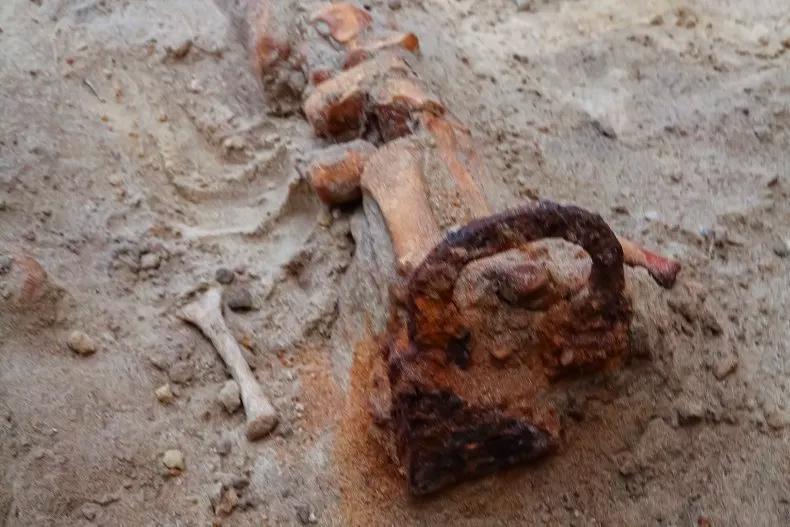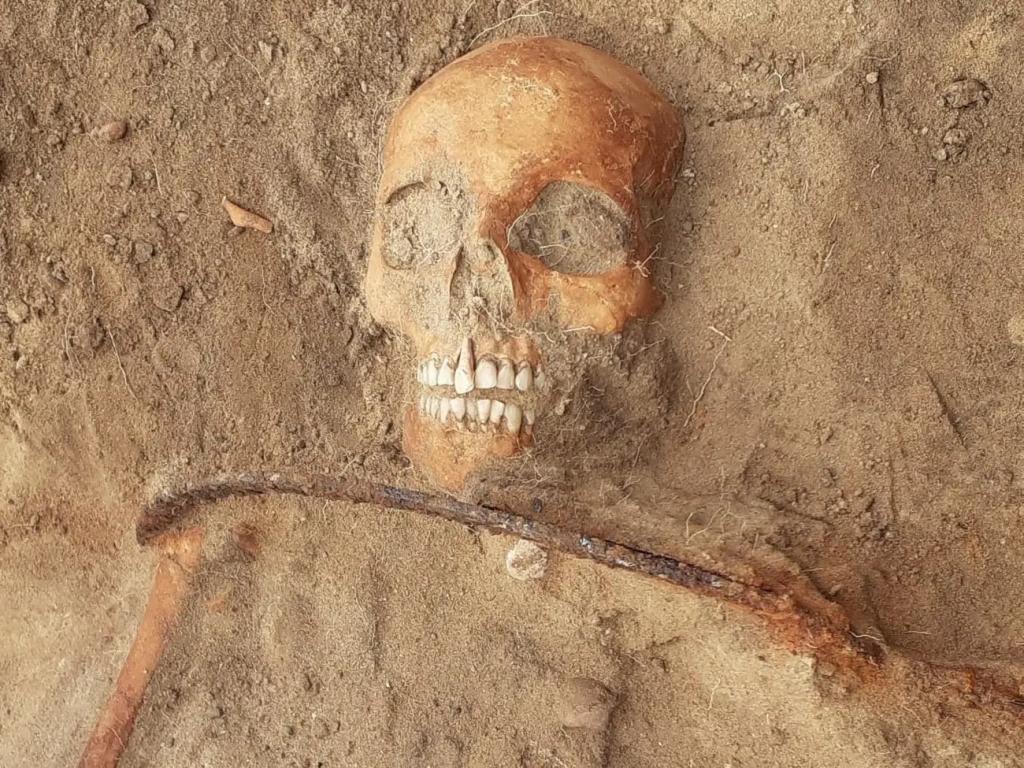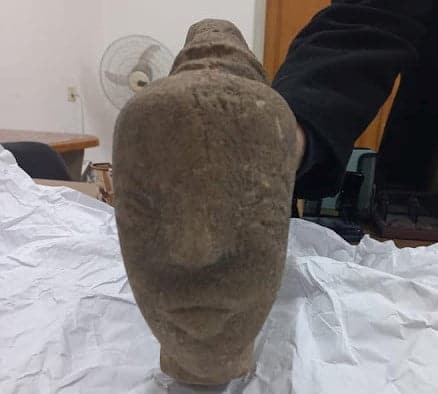Archaeologists from Nicolaus Copernicus University made the find in a 17th century graveyard in the Polish village of Pień.
The farming tool around the neck was once believed to be one of the ways to prevent a dead person thought to be a vampire from returning.
“Ways to protect against the return of the dead include cutting off the head or legs, placing the deceased face down to bite into the ground, burning them, and smashing them with a stone,” said Dariusz Poliński, a professor and leader of the excavations.
“The sickle was not laid flat but placed on the neck in such a way that if the deceased had tried to get up most likely the head would have been cut off or injured.”
In addition to the sickle around the neck, there was also a triangular padlock on her foot which according to Poliński symbolises “the closing of a stage and the impossibility of returning”.

Her remains were also buried with a high-quality silk headdress which is evidence that the woman had high social status while she lived.
In comparison to women at the time accused of supernatural powers, it seems this perceived vampire was treated with respect before and after her death.
“She was neither ritually murdered nor was she one of the convicted in a witchcraft trial,” Poliński said.
“Those individuals were treated in a different way and, usually, they were thrown into provisional graves, eg. at the gallows.”
Poliński and his team speculated the woman might have experienced misfortune at some point before her death that caused locals to fear she would come back for revenge.
“It is possible that in her lifetime the woman experienced a tragedy and was harmed,” he said.
“On the other hand, her appearance or behaviour might have provoked the contemporary residents to be afraid of her, but this may only be proved by more research on the skeleton.”






